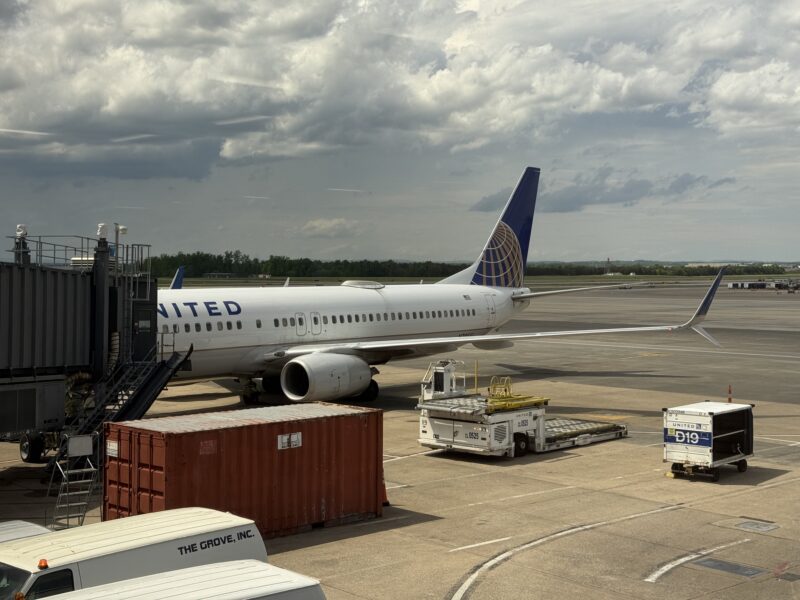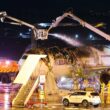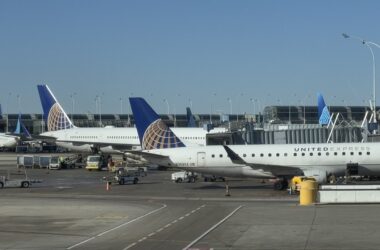Weather delays are quite common during the summer for air travel. Thunderstorms are prevalent, and the weather is unpredictable. Planes have to dodge storms in the air, and may be grounded if the destination is overwhelmed with storms and resulting slow-moving air traffic.
Many of us are no strangers to this. I most recently had weather disruptions a couple of months ago, in addition to another one last year. Knowing the effects these storms can have, I generally try to give myself the best chance to avoid these disruptions, like flying in the morning whenever possible.
To put it simply though, weather delays are inevitable. They will happen. I think it’s good to understand how these weather delays have an impact, as you know what to expect in such an event. Of course, half of the reason for my knowledge in this area is me being an Avgeek, but the more you know, right?
A few days ago, I was observing storms all over the US East Coast. It was interesting to see air traffic control do its thing to maneuver air traffic during the weather events, and I took a few screenshots on Flightradar24 to use as an example of how these storms can affect air traffic.
To start, the entire East Coast looked like this:
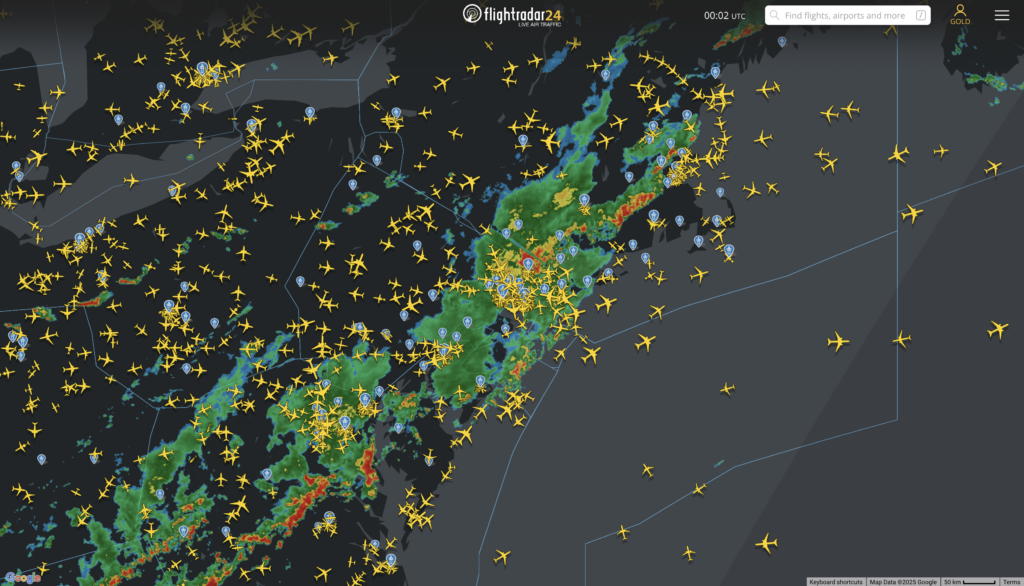
Yeah… that’s a rough look. This was around 20:00 in the evening local time. Nearly all major airports in the Northeast and the Mid-Atlantic were under ground stops.
How Do Ground Stops Work?
Ground stops are used to slow and control the amount of air traffic in and around an airport, and they can be used for a number of reasons.
The following are the listed ground stops I observed, and all of them were weather-related.
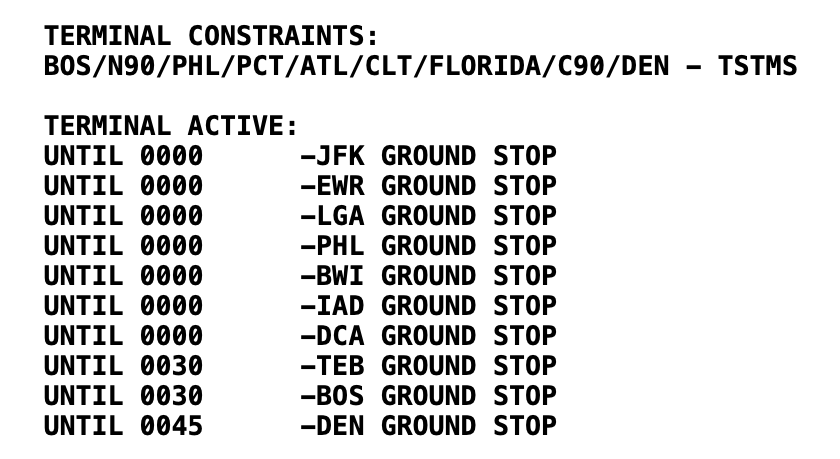
Ground stops apply to flights going to the airport, not flights departing from it. For example, a flight from Chicago to New York JFK would be grounded at Chicago if we go by the above photo. Conversely, flights from JFK to Chicago aren’t grounded. That said, it’s also likely that the JFK to Chicago flight could be delayed if there’s a need for a ground stop in JFK in the first place
Ground stops also don’t always apply to all flights bound to the airport; they typically apply by region.
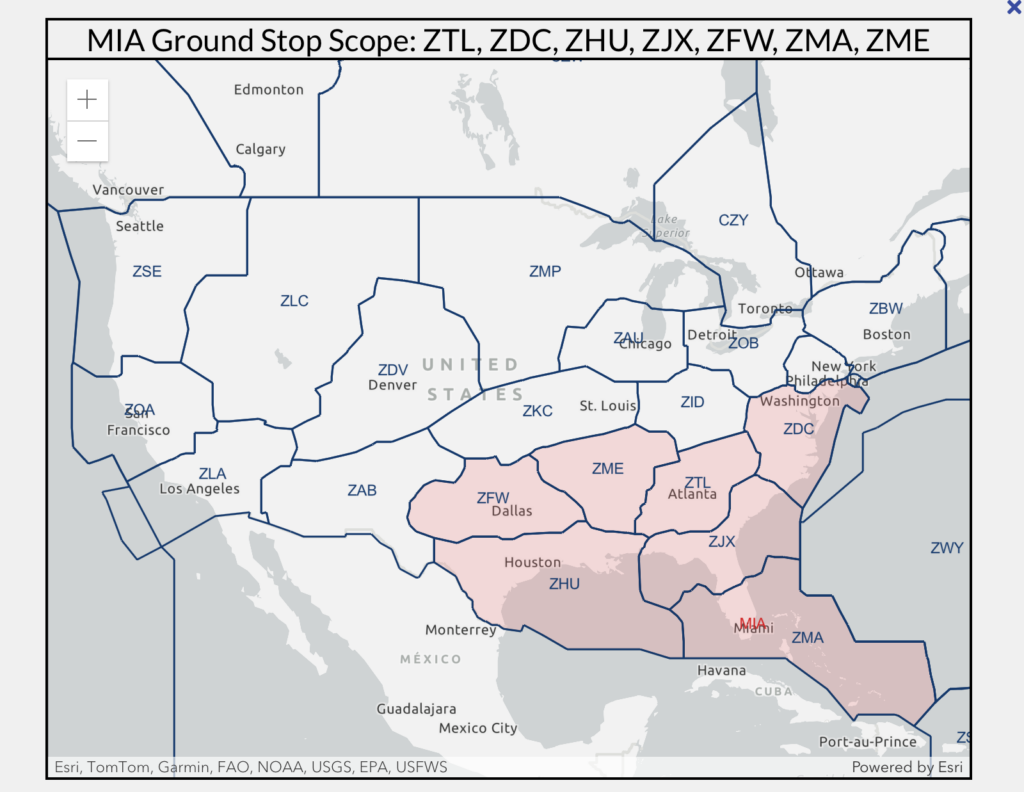
Take this ongoing Miami ground stop as an example, as I write this. The ground stop applies to 7 different Air Route Traffic Control Centers (ARTCC): ZTL, ZDC, ZHU, ZJX, ZFW, ZMA, and ZME.
This means that flights from any of these air traffic sectors are hit with a ground stop, while flights departing from other areas are spared (for now). For example, a flight from Washington Dulles, located in ZDC, is grounded. A flight from Boston, located in ZBW, is not grounded and can depart for Miami. This allows Miami to buy time and control the air traffic from whatever is causing the ground stop, and hopefully, the airport will have a manageable amount of traffic by the time the flights from outside the ground stop areas arrive.
What About Flights Already En Route?
Back to the East Coast storms I was talking about.
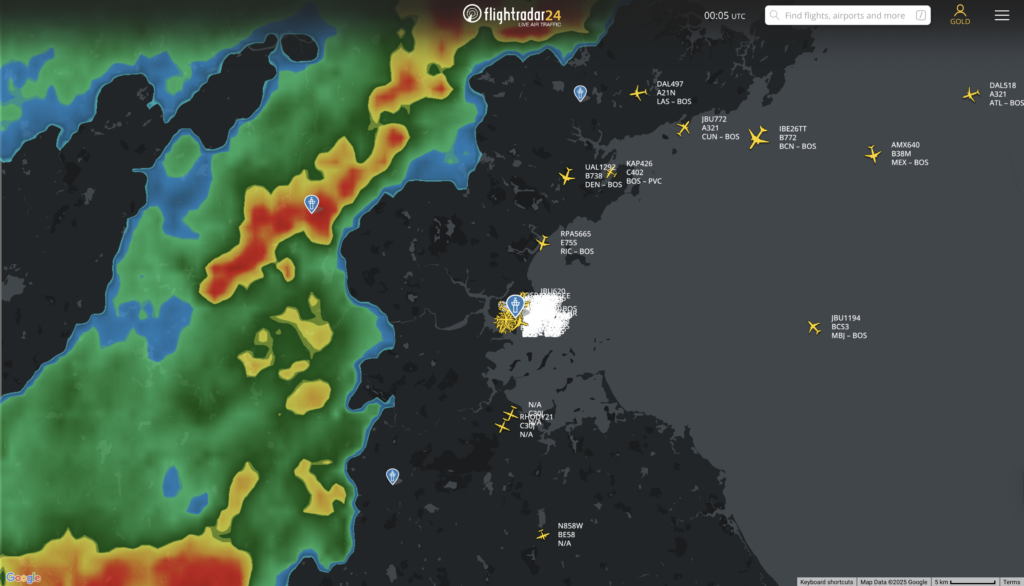
Ground stops don’t apply to flights already en route, meaning pilots and ATC have to get creative with the given situation. The above and following photos are a closer look at Boston just as the storm was arriving.
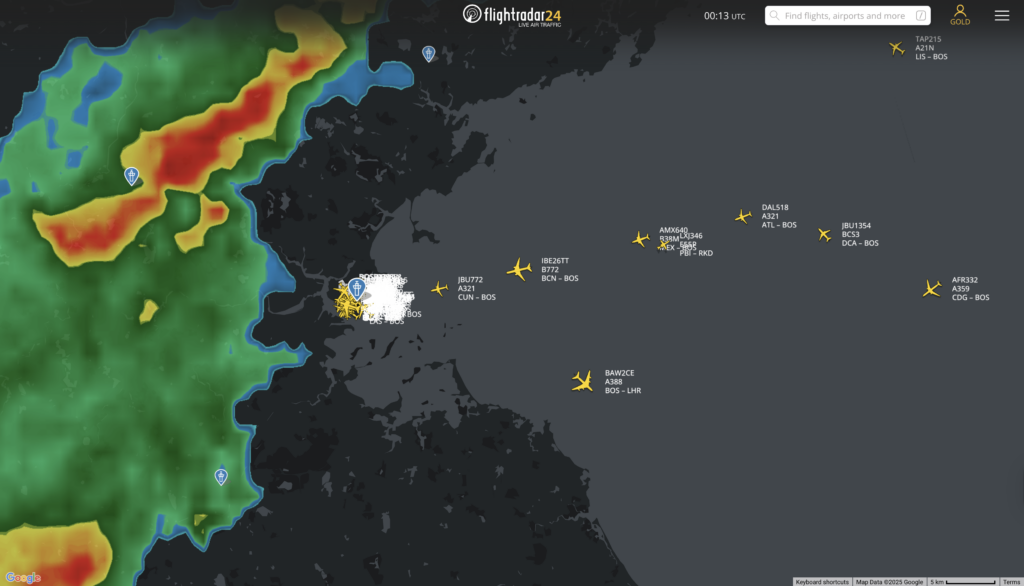
You can see Boston ATC trying to get as many flights to land before the worst. At this point, most departures out of the airport were halted; many of them were sitting on the taxiway waiting for the storm to pass.
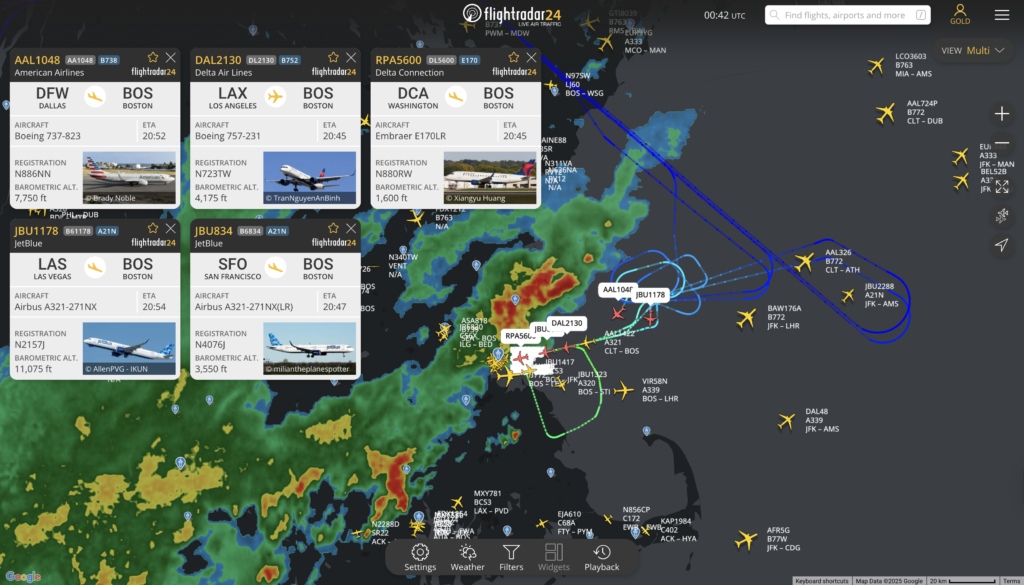
Arrivals had to take unusual approaches to buy time and reduce altitude. Many flights were observed in holding patterns, and a couple had to go around and try again.
These approaches take a lot longer than a standard approach in clear weather, hence the need for a ground stop, even though flights are still able to land.
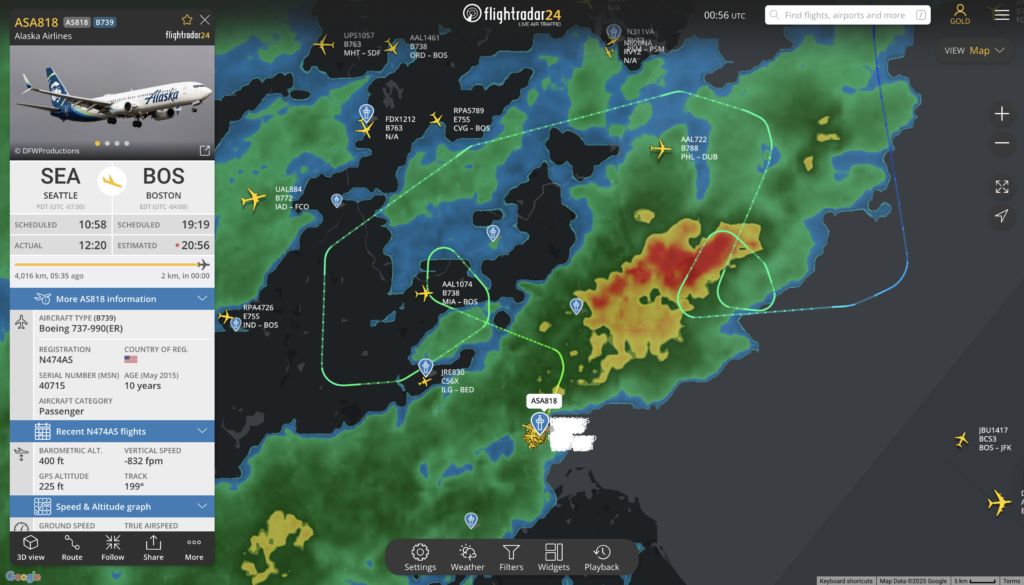
Take a look above at this Alaska flight from Seattle. Cudos to both the pilots and air traffic controllers for safely maneuvering this aircraft around!
In more severe cases though, like the Atlanta hailstorm last weekend, flights won’t hesitate to divert to nearby airports.
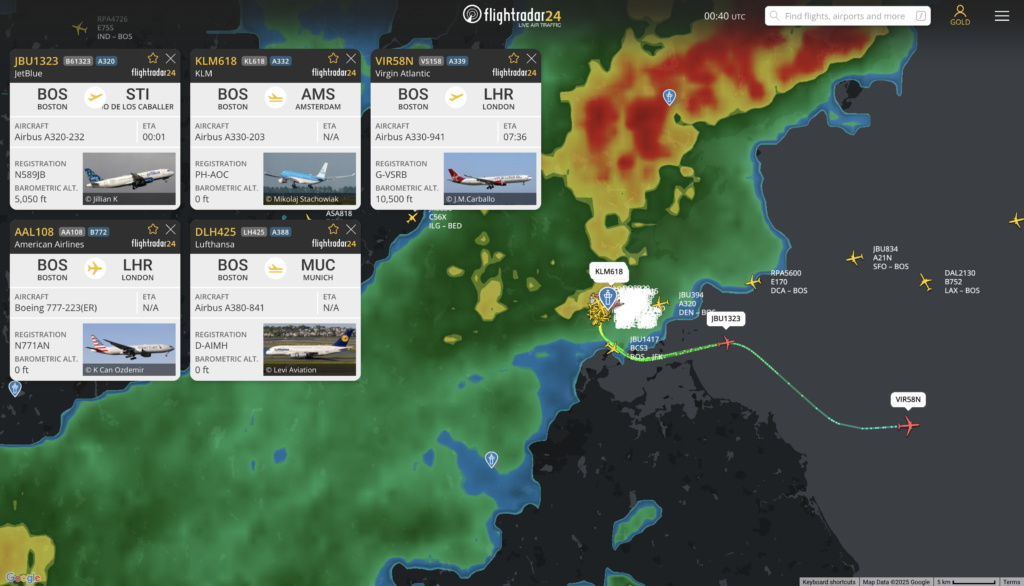
Despite most departures out of Boston being halted, many international flights still managed to take off. International flights often get priority in these situations, as airlines have more at stake in case of a delay or a cancellation compared to a domestic flight.
All five flights departing in the above photo were international flights.
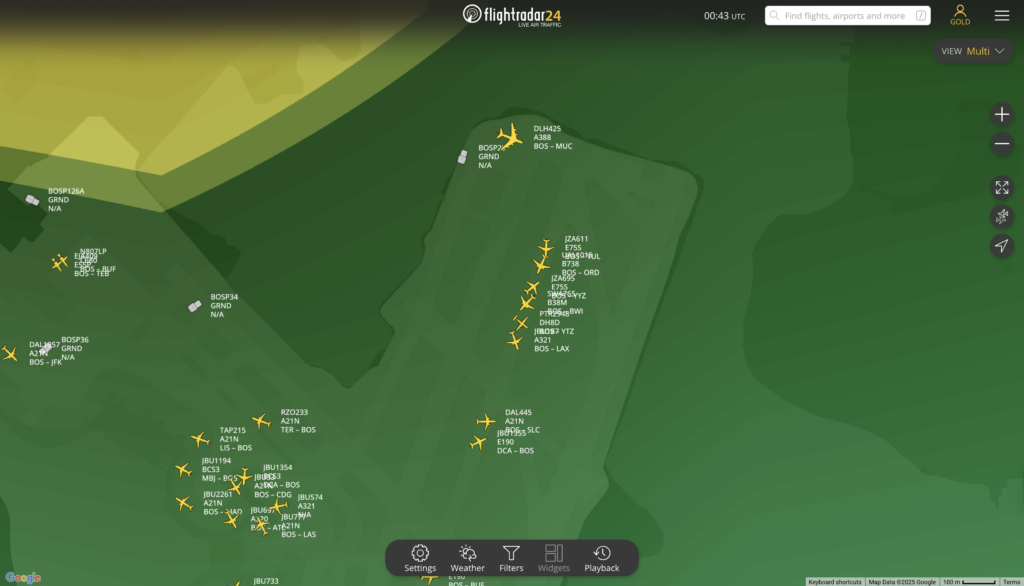
Meanwhile, domestic flights waited on taxiways for the storm to pass and ground stops for their destinations to get lifted.
Related: Frontier passengers stuck on taxiway for over 5 hours following Atlanta hailstorm
How to Avoid Weather Delays?
Weather delays aren’t fun and can ruin a trip quickly. Unfortunately, there’s nothing much I can say aside from “weather is weather.” But as I said in the beginning, I do try to book flights in the morning hours during the summer.
A lot of summer storms tend to occur in the afternoon and evening hours. And even if I did run into some delay, the morning gives me more flexibility and options as I have the entire day ahead of me, instead of getting stuck at an airport at night with few options aside from booking a hotel.
I talk about more of my summer travel tips here, including booking direct flights and taking advantage of credit card travel insurance benefits.
Weather delays are inevitable. The more you know, the better.
Featured image by the author.




